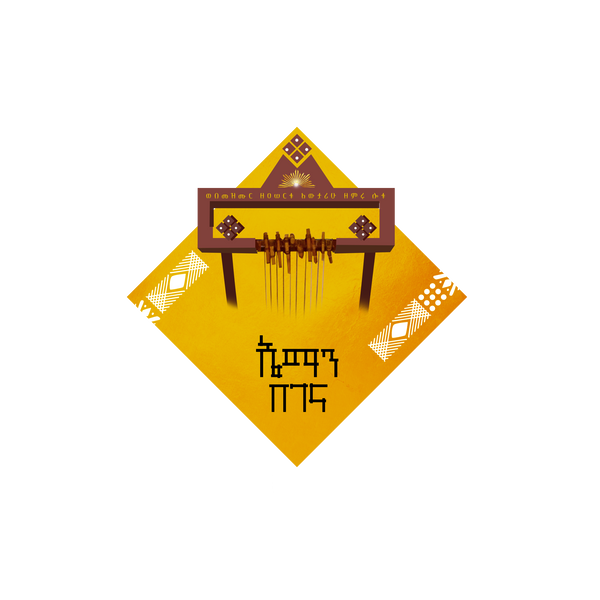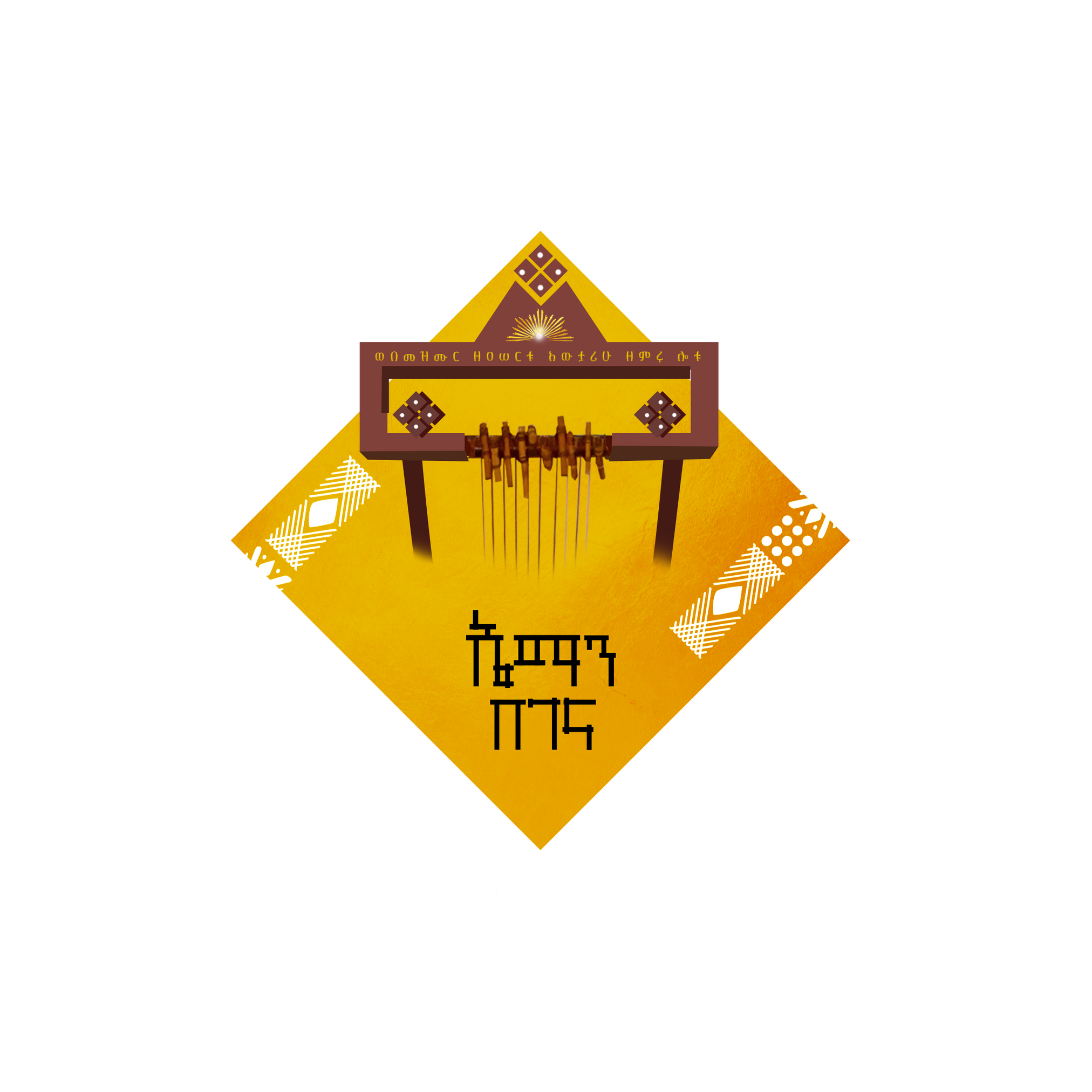Ermias Haylay is not only a teacher but also a musician or as it is customary to call in Begena musicology a Begena Master. Performing his music nationwide, Ermias became a link between traditional and contemporary genres. His fame as a musician rapidly caught different venues attentions both religious and national. After the successful opening of the annual event Memorabilia of the Begena (Zekre Begena), Ermias Haylay got an opportunity to get signed to Sewasew Multimedia, the Ethiopian Music streaming platform.

His first album was a huge success not only because of its great music quality but also because its meticulously planned out release methodology. The album Begenaye is a 15 track album that was released during the season of Lent. His artistic take to not only release a quality album in a major national label but also do it in the Lenten schedule connected with his audience. During the two months of lent a track was being released every Sunday following the weekly sections and observances of the Ethiopian Orthodox Tewahedo Church.
Album Analysis

The Album titled Begenaye is a play on words as most Begena song lyrics are, it directly translates to “My Begena” but it can also mean while I am still young. This song uses its stark melody to tell the relationship of a Begena master with its begena. “My Begena you are my one friend, I will not be sad saying I have nothing oh my Begena.” As mentioned this can have a second meaning or a deeper meaning “While I am still young you (feminine) are my one friend, oh while I am early”. The rest of the lyrics also has a double meaning. Ermias cleverly narrates and pleads for his youth while simultaneously talking about his Harp (Begena).
The rest of the songs revolve around and are named after the 8 observed Sundays of the Lenten Season.
 For the first Sunday of the Lenten Season in the Ethiopian Orthodox Tewahedo Church (EOTC) is called Zewerede (The one who descended from Above) which is the first song in Ermias’s album. This song is a poetic recantation about how Christ Descended, his time on earth and how he saved the world.
For the first Sunday of the Lenten Season in the Ethiopian Orthodox Tewahedo Church (EOTC) is called Zewerede (The one who descended from Above) which is the first song in Ermias’s album. This song is a poetic recantation about how Christ Descended, his time on earth and how he saved the world.
 The second Sunday on the Lenten season is called Kidist (Holy) This song speaks about the Holy Sabbath and the Beginning of Lent.
The second Sunday on the Lenten season is called Kidist (Holy) This song speaks about the Holy Sabbath and the Beginning of Lent.
 The third Sunday of Lent is called Mikurab (Synagogue) this song talks about the Synagogues Rabbi (Jesus Christ) The chorus translates as follows
The third Sunday of Lent is called Mikurab (Synagogue) this song talks about the Synagogues Rabbi (Jesus Christ) The chorus translates as follows
“The meek Rabbi of the Synagogue that speaks the word while he is the Word, While he is the gospel he preaches the gospel in human likeness.”
 The fourth Sunday in Lent is named Mesague (One who is Infirm) In this song Ermias uses a dramatic melody to recount the dramatic and miraculous story in John 5 about a man who was paralyzed for 38 years by the pool of Bethesda. This song has a stark lyrics and melody
The fourth Sunday in Lent is named Mesague (One who is Infirm) In this song Ermias uses a dramatic melody to recount the dramatic and miraculous story in John 5 about a man who was paralyzed for 38 years by the pool of Bethesda. This song has a stark lyrics and melody
“We have not seen one like him who heals and then orders get up carry your bed!”
This song is also a tribute to Ermias’s favorite Begena master and rolemodel Master of Begena Demise Desta.
 The fifth Sunday in Lent is named Debre Zeit (Mount of Olives) , on this song Ermias talks about what Christ revealed on Mount of Olives.
The fifth Sunday in Lent is named Debre Zeit (Mount of Olives) , on this song Ermias talks about what Christ revealed on Mount of Olives.
 The sixth Sunday in the Lenten season is called Gebrehere (Good Servant) , This song talks about the character of a good servant and references The Parable of the Talents that Jesus told in Mathew 25: 14-30. This song calls on people who live under the religion of Christianity to evaluate themselves and what they do with the gifts they are given.
The sixth Sunday in the Lenten season is called Gebrehere (Good Servant) , This song talks about the character of a good servant and references The Parable of the Talents that Jesus told in Mathew 25: 14-30. This song calls on people who live under the religion of Christianity to evaluate themselves and what they do with the gifts they are given.
 The 7th Sunday of the Lenten season is a tribute to Saint Nicodemus and this song talks about How Nicodemus was a member of the synagogue and he a teacher went to Jesus to get taught, and all the tests he faced and the questions he asked in the gospel of John chapter 3. It talks about how Jesus patiently explained and answered all of his questions, and explains the dilemma that Nicodemus was in between faith and doubt. The remaining verses talk about how later when Christ died he performed burial rights for Jesus and the distressed Blessed Virgin Mary blessed him and how though it took him long he is a saint for his journey from fear to faith was clear.
The 7th Sunday of the Lenten season is a tribute to Saint Nicodemus and this song talks about How Nicodemus was a member of the synagogue and he a teacher went to Jesus to get taught, and all the tests he faced and the questions he asked in the gospel of John chapter 3. It talks about how Jesus patiently explained and answered all of his questions, and explains the dilemma that Nicodemus was in between faith and doubt. The remaining verses talk about how later when Christ died he performed burial rights for Jesus and the distressed Blessed Virgin Mary blessed him and how though it took him long he is a saint for his journey from fear to faith was clear.
 The 8th Sunday of the Lenten season is Hosanna or Palm Sunday. This song uses a melody from a famous Begena song Tew Sima Hagere (Oh hear me my country) while the lyrics recounts the story of Palm Sunday and Jesus’s journey to Jerusalem on a donkey.
The 8th Sunday of the Lenten season is Hosanna or Palm Sunday. This song uses a melody from a famous Begena song Tew Sima Hagere (Oh hear me my country) while the lyrics recounts the story of Palm Sunday and Jesus’s journey to Jerusalem on a donkey.
The next 5 songs of the album center around Holy Week (Himamat) and were released daily on the week before Easter.

Belese ZeSenuy (The fig tree of the First day/Monday). This song talks about how nobody can examine the Lord for he is mighty and his ways can not be explained by any creature.
Tiyake ena Mels Zeselus (Q&A of Tuesday). This song uses a very melancholic melody and wax and gold literature crafted lyrics to recount the trial of Jesus Christ by the Jewish Council. Some of its sharply delineated lyrics goes
“All of their questions were cross puzzled* oh By whose authority do you teach us and command us to stop marketing in the synagogue they said, they even asked the Creator for a license to teach and perform miracles, Oh they asked the Creator for a license.”
* The word cross puzzled also foreshadows how Christ died on a cross.
Wa Enen*: (Woe to me): This song also has a double meaning “Woe to me”and “Oh it should have been me”. This song talks about all the sufferings of Christ for the salvation of Humanity. Every verse begins and ends by saying Wa enen which makes each verse both a warning to self for the wickedness of human nature (Woe to me) and also a deep sense of repentance in the human heart due to the actions of Jesus Christ that saved us (It should have been me).
Note: Wane* also means crow and can also deepen the meaning of the song. Refer to Ermias Haylay new single Ergeb ena Wane (The Dove and the Crow). For more analysis.
Tselote Hamus (Prayer/Maundy Thursday): This song talks about Jesus praying on the mount and then being caught and brought in and the events that followed and the biblical significance of the last supper.
“Moses got revoked The laws of the Old when the King ordered a new sacrifice Eat my flesh that will be broken tomorrow and drink my blood that will spill tomorrow”
Yimut Beka (Let him go die then!) This song with its strong title talks about the Crucifixion and mirrors the consequenses this had on the Jews and Judas with the blessings this order had for all of humanity.
“Oh Judas you great businessman! we exclaim! We are so glad you sold that clean lamb to be slaughtered, Look, Neither its Flesh nor its Blood runs out even though we keep eating our fill! — oh it wont end even if it keeps getting eaten!”
 Tensaye Godana (The road of Resurrection). This song talks about The Resurrection and how this changed the events of our Judgement day.
Tensaye Godana (The road of Resurrection). This song talks about The Resurrection and how this changed the events of our Judgement day.
“He killed death by dying and paved the road of Resurrection so that we may all rise again and stand for judgement day”
Due to the success of this album Ermias not only appeared on the national Ethiopian television but its famous weekend late night show The Seifu Show and performed on live TV at prime time. The album has over 50 thousand streams on Sewasew Multimedia.



